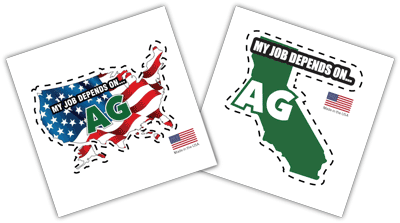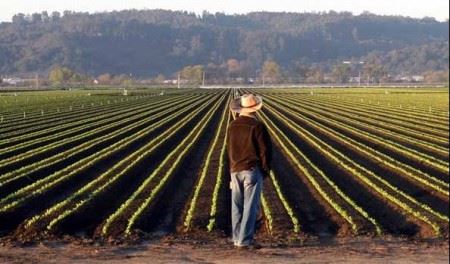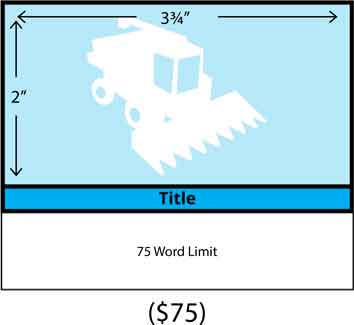When people think of California agriculture, images of wine grape vineyards in Napa or almond orchards and tomato fields in the Central Valley often come to mind. Yet, tucked away in the northern reaches of the Sacramento Valley (where over 90% of California rice is grown) lies one of the state’s most unique – and underappreciated – agricultural marvels: the California rice industry. (A small portion of rice, less than 10 percent, is grown in California’s San Joaquin Valley.)
Producing about 20% of the nation’s rice (California is the second-largest rice growing state in the U.S. after Arkansas), California’s rice fields are not just notable for their productivity. They are a testament to innovation, environmental stewardship and a blending of cultures that has no direct equivalent anywhere else in the United States. In many ways, the California rice industry is unique in both spirit and practice.
A Crop Out of Place?
At first glance, California might seem like an unlikely place to grow rice. The grain is traditionally associated with wet, humid regions such as Southeast Asia or the southern United States, especially Arkansas and Louisiana. Yet Northern California’s (traditionally) Mediterranean climate – hot, dry summers and cool, wet winters – turns out to be ideal for cultivating Japonica rice varieties, which prefer these conditions over the tropical climates that support Indica strains.
California growers primarily cultivate medium-grain and short-grain varieties like Calrose, a plump, sticky rice prized not only by American consumers but also internationally, especially in Asian markets. (About 90-95 percent of the rice grown in California is the medium-grain Japonica variety.) In fact, Japan, Korea and Taiwan are all major importers of California rice, a testament to the product’s quality.
Unlike the sprawling, semi-wild rice paddies seen in other parts of the world, California’s rice fields are meticulously engineered. Farmers carefully flood their fields with a few inches of water, creating the perfect growing environment while also tightly controlling water usage – a vital consideration in drought-prone California.
Some long-grain rice is also grown in California. For example, Butte County-based Lundberg Family Farms, which was founded in 1937, grows and markets numerous varieties of long-grain rice under its own brand, including traditional white and brown rice, along with specialty rice varieties like Jasmine, Basmati, Black Japonica and many others, in addition to producing medium-grain and short-grain rice.
It’s also worth noting that California is one of the two top states (Texas is the other state) for organic rice production. And California is a pioneer in something fairly new – growing rice using regenerative agriculture principles and methods. Lundberg Family Farms, for example, offers “Regenerative Grown” rice for sale in grocery stores nationally under its own brand.
Water: The Precious Commodity
Speaking of water, no discussion of California rice would be complete without addressing the elephant in the room: how does rice, a notoriously thirsty crop, justify its presence in a state where water scarcity is a constant concern?
The answer lies in part in the sophisticated water management practices employed by California rice growers. Unlike other types of farming that may allow water to seep away or evaporate with little oversight, rice farming creates a closed-loop system. Water used to flood rice fields often percolates back into underground aquifers or is recycled through complex drainage and irrigation networks. It’s a relatively efficient system considering the crop’s needs.
Moreover, the majority of California’s rice is grown in areas with heavy clay soils that are naturally impermeable. This means water sits on the surface and stays in place, minimizing loss. Comparatively, these conditions make rice cultivation one of the more sustainable options for land that wouldn’t support many other types of crops without massive inputs of water or soil amendments.
The California rice industry has also made great strides in reducing water use per-acre, investing heavily in research and technological advancements. Precision leveling of fields, laser-guided tractors and improved irrigation techniques have all contributed to making California’s rice fields among the most water-efficient in the world. However, because of climate change and persistent drought, California rice farmers will need to find new ways – primarily through technological innovations – to reduce water-use even further.
Environmental Stewards
What truly sets California’s rice farmers apart from those in other rice-growing states is their role in environmental stewardship. Rice fields in California have inadvertently created one of the most critical wetland habitats in the western United States.
When the natural wetlands of the Central Valley were drained for agriculture in the 19th and 20th centuries, millions of migratory birds lost a vital rest stop along the Pacific Flyway. Today, flooded rice fields provide a surrogate wetland habitat for more than 230 wildlife species, including ducks, geese, herons, egrets and shorebirds. Without these surrogate wetlands, the survival of many migratory species would be jeopardized.
Farmers work closely with conservation groups and government agencies to manage their fields in ways that maximize benefits for wildlife. Post-harvest flooding, for example, not only decomposes leftover rice straw (reducing the need for polluting field burning) but also creates temporary wetland environments during critical periods of bird migration.
This cooperative relationship between agriculture and environmental conservation is rare – and it’s one of the California rice industry’s crowning achievements.

Cultural Fusion
The story of California rice is also a story of people – specifically, the immigrants who helped bring rice to prominence in the state. Japanese immigrants played a critical role in introducing rice farming techniques to California in the early 20th century. Though their efforts were hampered by discriminatory laws like the Alien Land Law of 1913, their influence persisted and shaped the future of the industry.
Today, the legacy of those early Japanese farmers lives on in the types of rice grown and the methods used. The deep connection between California rice and Asian culinary traditions remains strong – it’s no coincidence that sushi restaurants across America often rely on California-grown rice for their dishes.
Furthermore, rice farming in California has become a multi-generational endeavor, with families of diverse backgrounds – Japanese, Chinese, Filipino and Italian among others – continuing the tradition. This cultural mosaic adds to the richness and resilience of the industry, fostering a spirit of collaboration and innovation.
Another unique aspect of California rice is that many of these multi-generation rice-growing families – names like Koda Farms, Lundberg Family Farms, Sohnrey and others – practice vertical integration. Rather than simply growing rice and selling it to a broker, they’ve created their own rice brands and products, which are sold in grocery stores throughout the U.S. and in some cases even globally.
Additionally, if you eat dinner at a sushi restaurant anywhere in America, it’s likely that the rice being served comes from California because what’s known as Calrose sticky rice (primarily medium grain) is prized by sushi chefs for its quality and consistency. No other U.S. rice-growing state can lay claim to this unique status.
Innovation at the Forefront
California’s rice farmers have always been at the cutting edge of agricultural innovation. Early on, they adapted to the state’s unique climate by selecting varieties best suited to local conditions. Today, that spirit of innovation continues through the use of precision agriculture technologies, sustainable pest management and climate-smart farming practices.
For example, some farmers are experimenting with dry seeding – a method where rice is planted directly into dry soil and fields are flooded afterward, reducing initial water use. Others are researching new rice varieties that can thrive with less water or resist pests without chemical interventions.
There’s also been significant work in reducing greenhouse gas emissions associated with rice farming. Rice paddies, when managed poorly, can emit methane, a potent greenhouse gas. California researchers and farmers have collaborated on strategies like mid-season drainage, which interrupts methane production cycles, helping to curb emissions without sacrificing yields.
The result is a rice industry that isn’t just surviving in the face of California’s environmental challenges. Rather, in many ways it’s leading the way in showing how agriculture can adapt to a changing world. More improvements and innovations are on the way.
Challenges Ahead
Of course, the industry is not without its challenges. Water politics in California are notoriously fraught, and competition among urban, agricultural and environmental interests will only intensify as climate change accelerates. International trade policies, too, play a significant role in the industry’s fortunes. Shifts in tariffs – like what is happening with the current tariff and reciprocal tariff-focused trade war in the U.S. – subsidies or consumer preferences can have outsized impacts on California’s rice growers.
Around 40 percent of California rice production is exported, making the industry extremely vulnerable to the current tariff and trade war environment. California rice – primarily its high quality sticky rice – is shipped throughout the Pacific, South America and Europe. Asia is the top export destination. Japan is the leading importer of California rice, followed by Taiwan and South Korea.
Labor shortages and the rising costs of production further strain the industry. Like many other agricultural sectors in California, rice farming relies heavily on skilled labor, much of it immigrant-based. Potential mass deportations, increasing government regulations and a shrinking labor pool threaten to erode profitability.
Still, if history is any guide, California’s rice industry has proven remarkably resilient. Its ability to innovate, its commitment to sustainability and its deep cultural roots suggest it will continue to thrive, albeit in a world that demands ever more from those who till the land.
A Model for the Future
In a time when agriculture is often painted as an environmental villain, the California rice industry arguably stands as a compelling counterexample. It shows that farming and conservation can coexist, that tradition and technology can complement one another, and that a single crop – managed thoughtfully – can nourish not just people but ecosystems too.
As we grapple with the challenges of feeding a growing population on a warming planet, there are lessons to be learned from California’s rice fields. They are more than just a source of food; they are living laboratories for a more sustainable agricultural future.
And that, more than anything, is what makes the California rice industry so unique.







